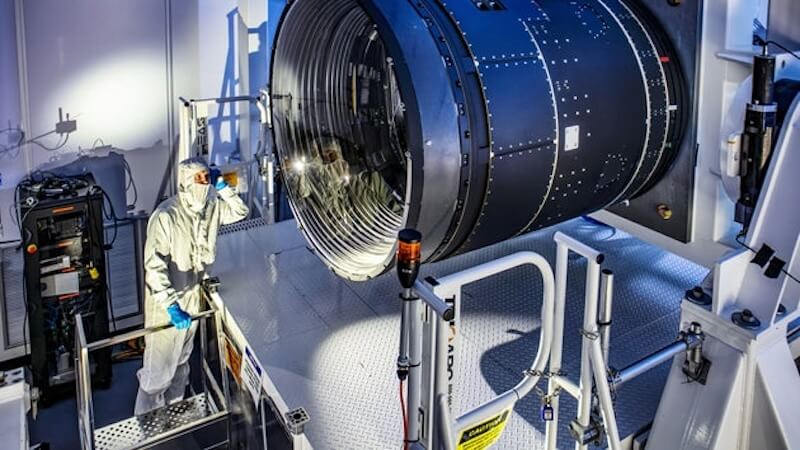
Researchers recently unveiled the world's largest camera. The system weighs 62 tons and has a resolution of 3,200 megapixels. It took them 20 years to develop.
Taking photos on smartphones is now child's play. When it comes to image quality, the devices are often in no way inferior to classic cameras. But there are also areas of application in which a higher resolution is required. Mapping the sky requires significantly larger sensors and resolutions.
The SLAC National Accelerator Laboratory at Stanford University in California recently completed a literally gigantic technological development. It is the world's largest digital camera. It is capable of taking images with a resolution of 3,200 megapixels. This is necessary to advance mapping of the night sky.
Largest camera in the world costs about $700 million
Before the camera can be used, it must be transported from California to the Rubin Observatory in Chile. The installation must then be carried out. The camera's production cost is around $700 million. It represents a milestone in astronomical research.
The Legacy Survey of Space and Time Camera (LSST Camera) is equipped with a sensor consisting of 201 custom-made CCD image sensors. The focal plane has a diameter of 64 centimeters. An essential part of the camera is the large shutter mechanism and a mechanism for changing the filters between the sensor and the lens.
System could increase number of known systems tenfold
These filters are crucial for research. Because they make it possible to photograph the same sections of sky at different wavelengths. This is the only way to make different materials visible. The camera is part of a telescope system equipped with an 8.4 meter primary mirror and a 3.4 meter secondary mirror. Together, the camera and telescope weigh around 62 tons.
Science highlights the importance of the camera in creating the most detailed map of the night sky ever created. Additionally, researchers expect the camera to be able to detect planets that are almost invisible to conventional telescopes. This could increase the number of known objects in Earth's cosmic neighborhood tenfold.
Also interesting:
Source: https://www.basicthinking.de/blog/2024/04/13/weltweit-groesste-kamera/


